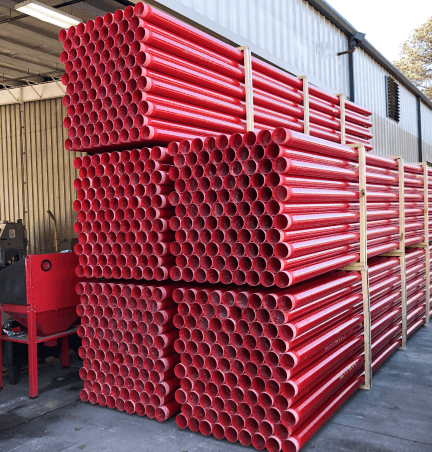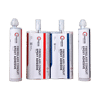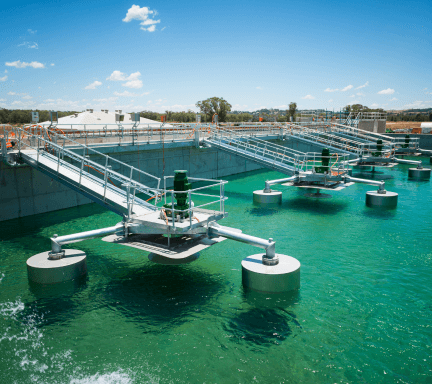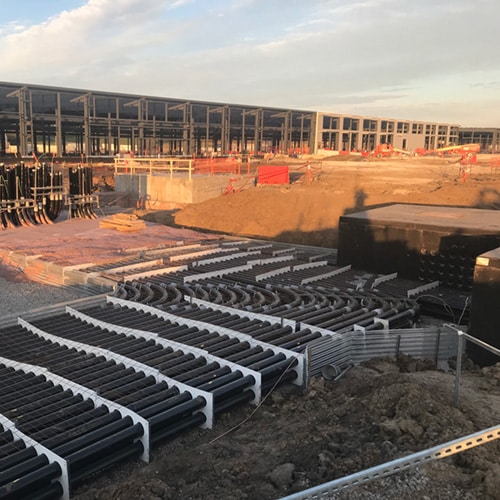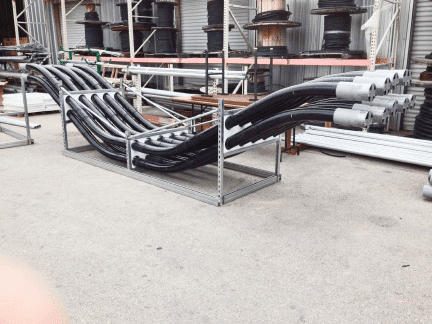Recently Champion Fiberglass President Goran Haag elaborated on the events that led to the development of the fiberglass electrical conduit market, standards milestones and what the future holds. Learn how discoveries launched an electro industry market that continues to grow to this day.
The Earliest Days of Fiberglass
While the process of heating glass into fibers dates back millennia, it was two scientists in the 1930s (at what later became the Owens Corning company) who discovered that these flexible, strong micro-filaments could be mass produced and woven into cloth. Furthermore, adding resin to fiberglass created a composite material that was lightweight, strong, and easily malleable.
Over the next few decades, research found that fiberglass-resin composite (also known as fiberglass reinforced plastics (FRP)) repels moisture, resists mold and mildew, does not conduct electricity, is impenetrable to most acids, resists corrosion and decay and does not expand or shrink.
Hot Water: Fiberglass Composite in Appliances
Fiberglass’s evolution as piping began with a common household appliance — the water heater. In the 1950s, Sears water heaters contained steel and ceramic dip tubes that tended to corrode and break when jostled. Because of the many broken and corroded pipes, the suggestion was made to try fiberglass pipe supplied by A.O. Smith company. This was the first application of fiberglass pipe use.
Utilization Skyrockets
Fast forward to the space race of the 1960s, specifically the Minuteman rockets — intercontinental ballistic missiles buried in silos in the Midwest. This was a time that propelled fiberglass composite use, with the defense industry bringing about new learnings, improved raw materials, and improved processes for filament winding with epoxy as a way to create strong materials for rocket motor cases. The aeronautical uses proved the strength of the composite materials due to thermoplastic resin and crosslinking. That is, once a thermal-set resin is heated, it cannot be reheated or reformulated.
Fiberglass piping also began to be used as pressure pipe.
By the late 1970s, A.O. Smith was making fiberglass pressure tubing for the chemical industry. They pressure tested the pipe for leaks, and any failed pipes were cast aside with no way of recycling or discarding.
Two gentlemen, Hank Shavel and Dick Ackerman, approached A.O. Smith with an inquiry to purchase their stockpiles of damaged product for use as electrical conduit pipe. Their plan was to use it for electrical conduit so there was no need to pressure test since wires, not liquid or gas, would fill the pipe.
They began to sell the rigid conduit for many applications, but mostly as raceway on bridges because of its light weight. Soon after, the two gentlemen realized that they were outselling the A.O. Smith scrap material. Demand for fiberglass conduit was growing.
Safe Solutions: Electrical Conduit is Mass Manufactured
By the mid to late seventies, General Electric Canada began to manufacture fiberglass pipe. Their fiberglass manufacturing efforts helped move the electrical conduit forward as a reputable product and the market continued to grow, making it a key competitor alongside PVC, PVC-coated steel, galvanized rigid steel (GRC) and aluminum in the electrical conduit field.
Another shift in the industry came in 1979, when there was a major fire in the New York subway system. Because of the PVC electrical conduit installed in subway tunnels, commuters inhaled hydrochloric acid from burning PVC pipe. In addition, the black smoke of burning PVC conduit made evacuation difficult; it was a very dangerous and unfortunate situation.
After that tragedy, MTA New York City Transit began using toxin-free fiberglass electrical conduit as it does not release harmful fumes when it burns. Champion Fiberglass has developed a further enhanced toxin-free, smokeless conduit based on phenolic resin which can withstand temperatures of up to 1850 ℉.
Setting Standards for Fiberglass Electrical Conduit
In the early eighties, more companies entered the electrical conduit marketplace, including Champion Fiberglass in 1988. President Goran Haag recognized right away that the National Electric Code (NEC) and Underwriters Laboratories (UL) standards were inadequate for fiberglass electrical conduit. So he prioritized an effort to improve standards.
Haag was successful in changing the complete UL standard for fiberglass conduit. Then in 1990, the National Electric Code was amended to allow fiberglass conduit use in above ground installations, in addition to underground electrical conduit installations.
Another milestone came in 2008 when Champion Fiberglass electrical conduit secured Class One Division Two approval, allowing fiberglass conduit for use in chemical manufacturing and other applications with explosion hazardous areas.
The Future of Electrical Conduit
Haag points to modern advancements in composite materials such as use in the Boeing 787 Dreamliner, as well as most new, small planes, which are nearly all fiberglass or carbon fiber composite. Surely, creative uses of strong resin composites are yet to be discovered.
So, what does the future hold for fiberglass electrical conduit? Says Haag, “When we started in 1988, there were seven manufacturers of fiberglass conduit. Today, there are three and Champion Fiberglass is a dominant force among them. I believe that fiberglass conduit will continue to be substituted for other types of electrical conduit such as rigid metallic conduit materials steel and aluminum.”








